Mon, 16 Mar 2015 . Last updated Thu, 18 Jun 2015 14:33
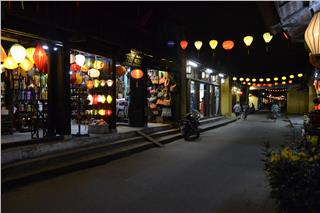
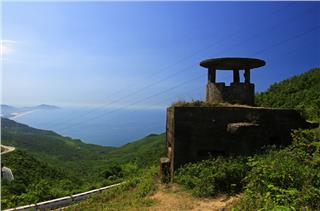

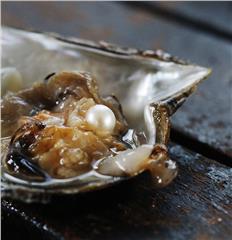
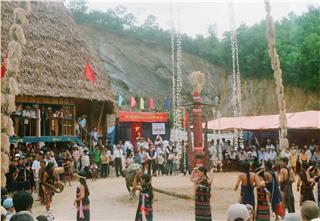
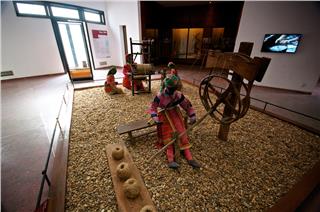

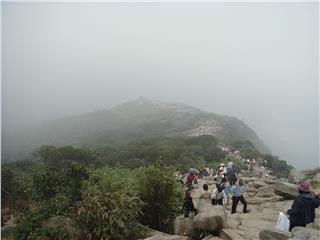
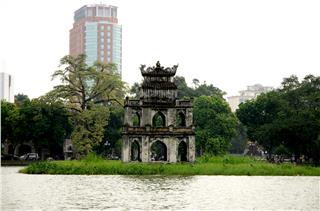
Hang But Street with 68m in length crosses Thuoc Bac Street and Bat Su Street (Hang Bo ward, Hoan Kiem district, Hanoi). In the past, Hang But street was called “Hang Mun” (the street of bits of cloth) because people here often bought bits of cloth from tailor shops to make clothes, hats, socks and especially bags for children to wear on Middle Autumn festival and Double Five festival (annual 5th day of 5th lunar month). This street was built on the foundation of Dong Thanh hamlet, Tien Tuc district (so-called Thuan My district, former Tho Xuong district). In the French domination period, it was called Congbanez Street that offered notebooks, papers and pens for students. In 1945, it was renamed “Hang But”. (Actually earlier, Hang But Street was part of Thuoc Bac Street).
There are two shops specialized in hand-made scarfs and traditional costumes on the street. This 80-year-old man is owner of a shop. He has followed the craft of making traditional scarfs and costumes for years. In the past, almost all the residents here were poor. They mainly lived on selling stuffs in the market nearby. After the market closed, they worked as hired workers for sailor shops, or bought bits of cloth home to make hats and bibs for kids. That’s why this street used to be called “Hang Mun” (the street of bits of cloth). Besides, people here worked for medicinal herb shops on Lan Ong Street. This woman has opened this roadside tea store on the street for 30 years.
Hang But Street is very short with about five houses per side. However, it develops rapidly. Tens of years ago, it was a restricted street and seen as a playground for students of Le Van Tam school (headquarter of Hoan Kiem district’s Department of Education now). Then, people here have gradually opened shops on this street, making it more bustling. Mr. Thanh, owner of the sailor shop takes me around Hang But Street.
Hang But Street has changed a lot with the appearance of shops offering consumer products and services. The vintage street now just remains in people’s mind. It now becomes more bustling with shops. Coming here, I am most impressed by the tailor shop of traditional costumes of Mr. Thanh. It is a traditional cultural value of the street that needs preserving and treasuring.
This is one of the shortest streets in Hanoi. It is only 52 meters in length, perpendicular to Dinh Le and Trang Tien streets, Hoan Kiem district. In the French domination period, it was called “Giuylo Boaxie”. In 1945, it was officially renamed “Chua Quan Thuong”. This street was built on the foundation of Hau Lau Hamlet, Ta Tuc (Phuc Lam then), Tho Xuong district. Nowadays, like Dinh Le Street, this street is known as the street of bookstores. The customers who come here to buy books are different in ages.
The street is called “Nguyen Xi”. This is name of a general (1936 - 1465) under the reign of Le Loi. He was a native of Nghi Xuan district, Ha Tinh province. Earlier, he lived in Thuong Xa village, Nghi Loc district, Nghe An province. Nguyen Xi was adopted son of Le Loi. In 1416, le Loi started raising a fight against Ming invaders by opening Lung Nhai swearing festival with his 18 companion-in-arms. Nguyen Xi and his brother Nguyen Bien also got involved in the fight. In early 1418, Le Loi rose up in arms in Lam Son and Nguyen Bien and Nguyen Xi officially became insurgent troops.
At the age of 21, Nguyen Xi and his brother and other trops achieved feats in Lac Thuy, Muong Thoi and My My (upper Chu river), marking a turning point in his life. He devoted himself to the national salvation of Le Loi and the Ly dynasty. Nguyen Xi made great contribution to the fight against Ming invaders and flights on all sides in Ninh Kieu, Tot Dong, Mi Dong, Xuong Giang – Chi Lang and liberated Dong Quan citadel, bringing freedom to the country. He contributed to quelling the revolts in Don Ban, Nghi Dan and brining Le Tu to the throne.
King Le Tu (so-called Le Thanh Tong) made the Le dynasty the most prosperous dynasty the feudal period in Vietnam. King Le Thanh Tong conferred the title of “Cuong Quoc Cong” to Nguyen Xi and ordered people to build a house of worship for him in Thuong Xa village, Nghi Loc district, Nghe An. The street, which is named after General Nguyen Xi, now becomes more bustling than before. This man has lived here for years. At his retirement, he still reads books on Vietnamese history passionately.
This is the first time I have gone through Nguyen Xi Street and I am totally impressed by its length 52 meters only. Especially, this street is named after a great general under the post-Le dynasty. Nguyen Xi was a brilliant general and an outstanding politician who was loyal to the four ages of the post-Le dynasty. I am so proud of General Nguyen Xi. Vietnamese history shows that heroes are found in any age. Although Nguyen Xi is the shortest street in Hanoi, it will elongate Vietnamese history through ages. I continue my journey to discover other short streets in Hanoi. In the evening, Ho Hoan Kiem Street becomes more crowded with the appearance of customers of roadside food stores that serve dried beef salad here.
Ho Hoan Kiem Street is recognized as the shortest street in Hanoi with only 52 meters. It crosses Cau Co Street and Dinh Tien Hoang Street and belongs to Hang Bac ward, Hoan Kiem district. Earlier, it belonged to Ta Vong hamlet, Huu Tuc, Tho Xuong district. In the past, there was a canal running through Thai Cuc lake (Hang Dao street now) and Ho Hoan Kiem street. Under the French domination period, it was called Hoi Hoa Nhac Street or Hang Che alley. In 1945, it was renamed Ho Hoan Kiem street because it is near Hoan Kiem Lake.
Earlier, there were only two house numbers: No.1 and No.2 at the two sides of the streets. Now, it becomes more bustling with tourists and souvenirs shops, selling traditional handicrafts imbued with the national culture. Although it is the shortest street in Hanoi, it has existed for over thousand years and bears cultural features of Hanoians. It is pity that I do not have enough time to learn and discover culture and people’s life on this street more. The millennial city of Hanoi seems familiar to us, however, there are a lot of interesting things and historical and culture stories hidden in its shortest street that we have not yet known.
Source: VTC10 - NETVIET

 Đặt vé máy bay cho người Việt?
Bấm vào đây
Đặt vé máy bay cho người Việt?
Bấm vào đây
Our service uses cookies for technical, analytical and marketing purposes. See our Cookie và Privacy policies for more information. If you agree to this, just keep browsing.


